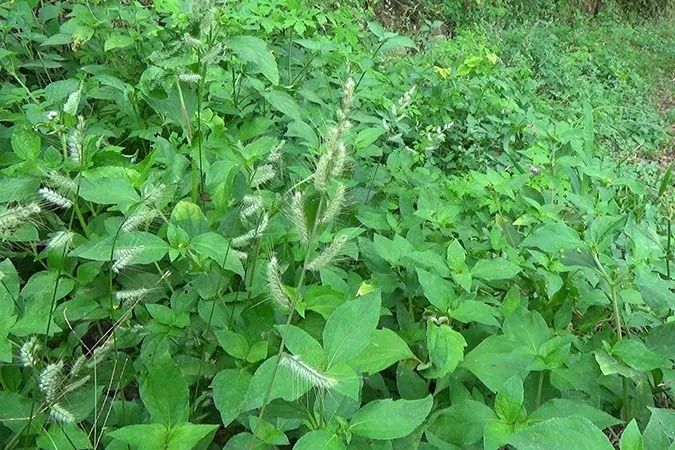Rumput Burmann or Burmann's basketgrass or Oplismenus burmannii (Oplismenus burmanni) is a plant species in Poaceae, annual grass, bent sideways or upright, stem length up to 60 cm, lanceolate leaves to narrow ovate, green, growing in shady places in the forest and on the roadside.
O. burmannii has a springy, rounded stem and rooting in the node. Flowers have a length of up to 2.5 cm, spikelet length 2.5-3.5 mm, usually pubescent, contiguous and white. Rough awns with white fuzz and less than 2.5-20 mm.
Burmann's basketgrass fills vacant lots at altitudes up to 1600 meters. It breeds quickly and grows wild on plantations, but is easily controlled. This grass is widely used for animal feed, erosion control and ornamental plants.
Kingdom: Plantae
Phylum: Tracheophyta
Subphylum: Angiospermae
Class: Liliopsida
Order: Poales
Family: Poaceae
Subfamily: Panicoideae
Tribe: Paniceae
Genus: Oplismenus
Species: Oplismenus burmanni
Varieties: Oplismenus burmanni var. burmannii and Oplismenus burmanni var. nudicaulis
O. burmannii has a springy, rounded stem and rooting in the node. Flowers have a length of up to 2.5 cm, spikelet length 2.5-3.5 mm, usually pubescent, contiguous and white. Rough awns with white fuzz and less than 2.5-20 mm.
Burmann's basketgrass fills vacant lots at altitudes up to 1600 meters. It breeds quickly and grows wild on plantations, but is easily controlled. This grass is widely used for animal feed, erosion control and ornamental plants.
Kingdom: Plantae
Phylum: Tracheophyta
Subphylum: Angiospermae
Class: Liliopsida
Order: Poales
Family: Poaceae
Subfamily: Panicoideae
Tribe: Paniceae
Genus: Oplismenus
Species: Oplismenus burmanni
Varieties: Oplismenus burmanni var. burmannii and Oplismenus burmanni var. nudicaulis
